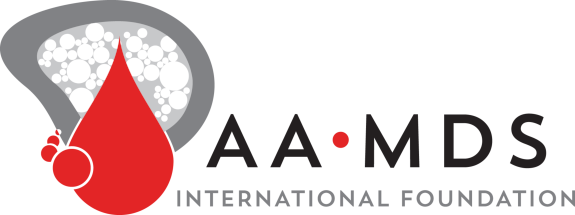MDS, or Myelodysplastic syndromes, are a family of rare disorders in which the bone marrow fails to make enough healthy red blood cells, white blood cells or platelets. This is caused by bone marrow producing lots of underdeveloped, or immature, cells that have an abnormal shape, size or look. These are called blast cells. Most experts agree that MDS is a form of blood and bone marrow cancer.
MDS, also known as myelodysplasia or myelodysplastic syndromes, develops because the bone marrow cells do not develop into mature blood cells. Instead, these blood cells stay within the bone marrow in an immature state.
There are many subtypes of MDS. Some cases are mild, while others are more severe, and carry a high risk of becoming acute myelogenous leukemia (AML). The subtype you have, and the severity of your case, depend on many factors, including how low your blood counts are and any genetic changes you have in your bone marrow cells.
Studies suggest that 12,000 to 15,000 MDS cases are newly diagnosed annually in the U.S., and an estimated 50,000 to 75,000 people currently live with MDS. The exact number of people living with MDS is unknown.
To understand MDS, you must first learn how your bone marrow makes blood. This section defines the process and explains what goes wrong when you get MDS. We also recommend watching this video on our YouTube channel.
What is happening to my blood with MDS?
Blood consists of blood cells floating in plasma. Plasma is mostly made of water. It also includes salts, proteins, hormones, minerals, vitamins and other nutrients and chemicals your body needs.
What are the 3 Basic Types of Blood Cells?
- Red blood cells (RBCs) are also called erythrocytes. They make up almost half of blood. Red blood cells are filled with the protein hemoglobin that picks up oxygen in the lungs and brings it to cells all around the body.
- White blood cells (WBCs) are also called leukocytes. They fight disease and infection by attacking and killing germs that get into the body. There are several kinds of white blood cells, each of which fights a different kind of germ.
- Platelets are also called thrombocytes. They are small pieces of cells that help blood clot and stop bleeding.
How are Blood Cells Formed?
The process of making blood cells is called hematopoiesis. Blood cells are made in the bone marrow, a spongy tissue located inside certain bones. Marrow contains blood-forming stem cells that make copies of themselves to create all 3 types of blood cells. When blood cells are fully mature and functional, they leave the bone marrow and enter the bloodstream. Healthy people have enough stem cells to make all the blood cells they need.
What is Bone Marrow Failure?
Bone marrow failure occurs when the marrow doesn't produce enough red cells, white cells or platelets, or the blood cells that are produced are damaged or defective. This means the body can not supply itself with the blood it needs. Myelodysplastic syndromes, along with aplastic anemia and PNH, are bone marrow failure diseases.
What are blast counts for MDS patients?
Blasts are very young or immature white blood cells. In normal bone marrow, no more than 5 out of 100 white cells are blasts. Because people with MDS may have too many bone marrow blasts, doctors use their blast numbers to help define the severity of their MDS:
- If fewer than 5 out of 100 white cells in your bone marrow are blasts, you have lower-risk MDS.
- If between 5 out of 100 and 19 out of 100 white cells in your bone marrow are blasts, you have higher-risk MDS.
- If 20 or more out of 100 white cells in your bone marrow are blasts, you have AML or acute myelogenous leukemia. About 30 out of 100 patients diagnosed with MDS will eventually have AML.
What is the impact of MDS?
MDS is a group of disorders in which bone marrow cells do not develop into mature blood cells. Instead, these cells stay within the bone marrow in an immature state. The symptoms and course of MDS may vary greatly from person to person and also depend on which blood cells are affected. Most experts agree that MDS is a cancer of the blood and bone marrow.
All people with MDS have two things in common:
- They have a low blood cell count for at least one blood cell type. This is called a cytopenia.
- Their bone marrow and blood contain blood cells with an abnormal shape, size or look.
What does "myelodysplastic” mean?
- Myelo = blood cells
- Dysplastic = abnormal cell development or growth.


